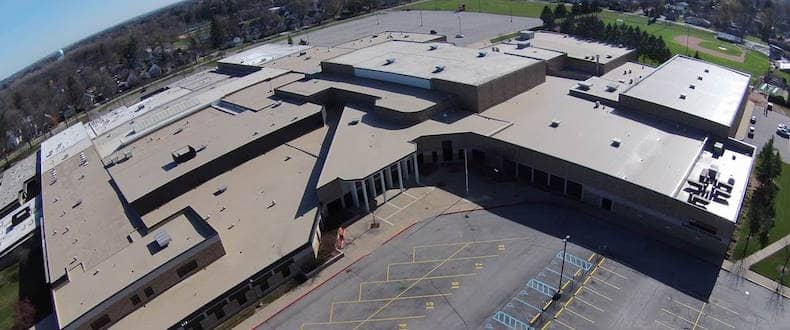In the education sector, providing students the opportunity to learn and grow is of utmost importance. Educators, superintendents, school boards and facility maintenance managers are obligated to ensure every student has access to a quality education. But in order to administer that quality education, your district must first have safe and structurally sound facilities.
For many school districts, funds to be used for facility updates are dictated by the state, and these updates most often exclude costly roofing systems. Additionally, schools must comply with standard design guidelines and regulations published and enforced by the state.
Luckily, there are often ways to receive funding for costly school roofing projects. In the case of Ohio public schools, the Ohio Facilities Construction Commission regulates design specifications and plays an integral part in both the funding and installation of these projects. Additionally, energy-saving programs are available for schools looking to make efficiency improvements and reduce their overall environmental footprints. And the School Energy Program, established in 1985, “gives districts the ability to borrow funds without having to pass a ballot issue for the authority to borrow. This limited borrowing authority has given districts the ability to save millions in utility bills and operating costs, and all at no additional taxpayer expense.” Cost-saving initiatives and grants allow educators to repurpose their funds, giving back to student education and ensuring taxpayer dollars are used appropriately.
When it comes to school roofing, low-slope roofs are the most common and frequently recommended because they’re easy to clean and install. Low-slope roofs are defined as those installed with a 2:12 (9.5 degree) or less roof slope. During the summer and winter months, it’s important that your roof maintain internal temperature while reflecting harsh UV rays that can affect overall facility conditions. Studies show that light-colored membranes with high reflectivity provide the highest ROI because of how much energy they save. Doing your homework on geographical climate trends and conditions year-round and knowing the functionality of your school’s roof will also prove to be beneficial when shopping for a roofing membrane to fit your needs.
It’s equally important to research and recruit an experienced roofing contractor to recommend the appropriate roofing system for your school. Ultimately, paying more for a high-performing roof will give you security and peace of mind for many years. A failing roof can mean more than expensive repairs; community/patron relations and student safety can be jeopardized as a result. The impact could also negatively affect taxpayers, resulting in less community support and financial security.
What are your thoughts on installing high performance roofing systems on schools? Tell us about them in the comments!
-1.png?width=500&height=271&name=FiberTite_Only%20(500px%20wide)-1.png)



-1.png)